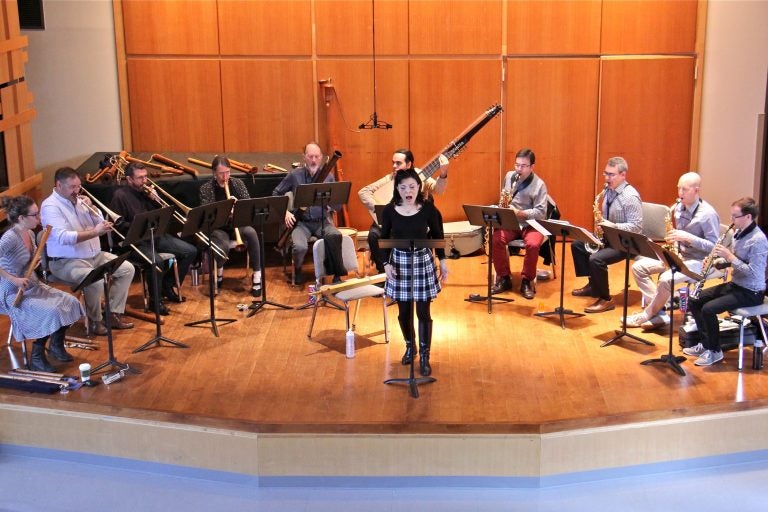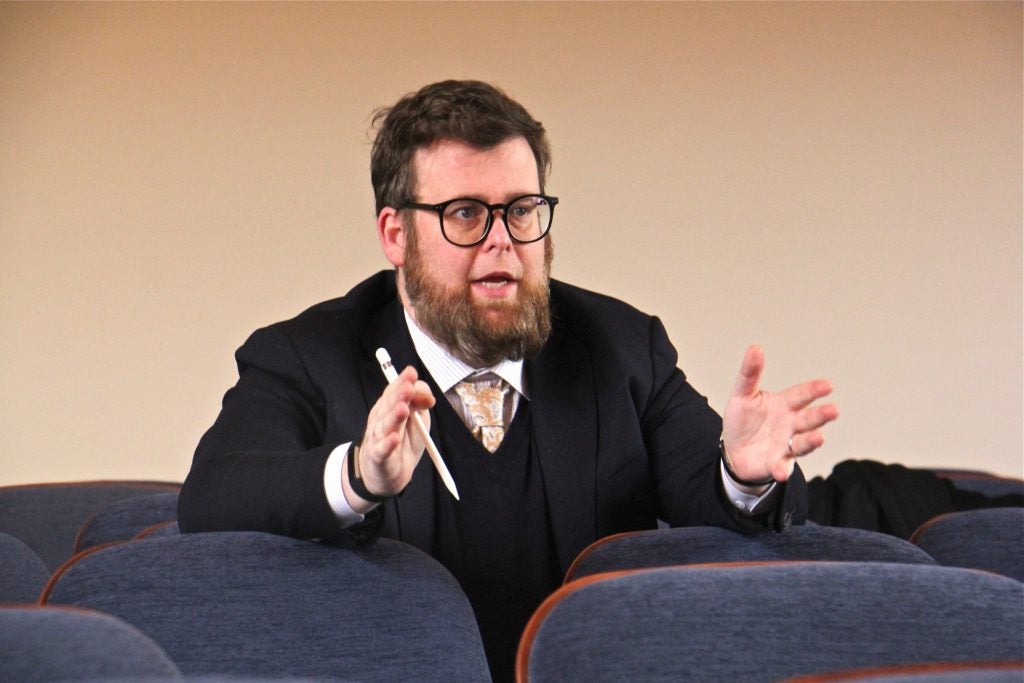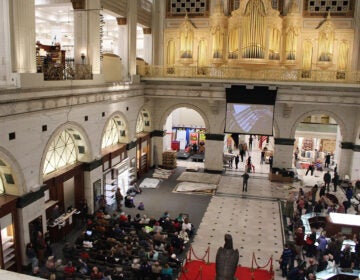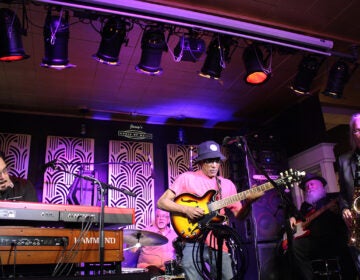Musical ‘bookends’ Prism Quartet and Piffaro offer world premiere performance
The Renaissance wind ensemble Piffaro and Prism Saxophone Quartet join forces Wednesday to premiere “The Anchoress” by David Ludwig.
Listen 4:37
Members of Piffaro and the Prism Saxaphone Quartet rehearse David Ludwig's "The Anchoress" at Rock Hall at Temple University. (Emma Lee/WHYY)
The Renaissance wind ensemble Piffaro and Prism Saxophone Quartet join forces Wednesday to premiere “The Anchoress” by David Ludwig.
Ludwig, the chair of composition studies at the Curtis Institute of Music, started forming the idea for the work after reading a work by poet Katie Ford about a medieval anchoress. It described a woman who sequestered herself in a small room adjacent to a church.
“Anchorism was a tradition that lasted for many hundreds of years,” he explained. “They would withdraw from society and go into this space. The space would be bricked up, so they would live there for the rest of their lives. They were considered living saints, so people would go and consult with the anchoress living in the church. They often had mystical visions, and they wrote about their experience living in this extreme confinement.”
Ludwig decided to use the text for a solo female voice and to add an early music ensemble. He turned to Piffaro, the long-running Renaissance wind ensemble based in Philadelphia.

At the same time, the Prism Quartet was eager to work with Ludwig again.
“He had written a piece that we had commissioned previously, which had become a mainstay of our repertoire. A piece called ‘Josquin Microludes’,” said Prism’s tenor saxophonist Matt Levy. Coincidentally, they had also been wanting to collaborate with Piffaro for a long time, so Levy approached Ludwig.
“And so the planets finally aligned for this piece,” Levy said.
After this initial enthusiasm came the question of how to meld the sounds of these very different groups.
“These are kind of the bookends of music history,” Ludwig said. “The challenges of writing for a saxophone quartet, which in many ways is the most modern acoustic set of instruments, and ancient Renaissance winds, whose histories go back hundreds of years.They have very different tones and colors, but that was something I wanted to make a feature and not a bug.”
Piffaro’s co-artistic director, Robert Wiemken, said there was a very basic difference that had to be ironed out from the start.
“Piffaro plays at a historic Renaissance pitch, about a half step higher than modern pitch,” he said. “Consequently, the two ensembles are a half-step apart.”
Ludwig admitted they worked a lot at adjusting for that, as well as the difference in dynamics. Levy said the saxophones were especially sensitive to that.
“Renaissance or medieval instruments have a softer dynamic range, and so we’ll really have to temper our sound when we’re playing together so that we don’t overpower,” he said. “There’ll be a real conscious effort to try and blend and mix sound.”
Even after resolving musical differences, you might ask whether modern audiences would relate to a text about a woman locked away in medieval times. Ludwig feels the message of “The Anchoress” is relevant today, as the busy-ness of modern life gives rise to calls for mindfulness and slowing down.
“Certainly it’s very compelling to people who live today who have these frenetic digital lives that we all have,” he said. “That idea of complete solitude and making one’s own space.”
The Philadelphia Chamber Music Society presents the premiere of “The Anchoress” — with Piffaro, the Prism Quartet and soprano Hyunah Yu — at the Kimmel Center Wednesday followed by a performance at the DiMenna Center for Classical Music Thursday.
WHYY is your source for fact-based, in-depth journalism and information. As a nonprofit organization, we rely on financial support from readers like you. Please give today.




